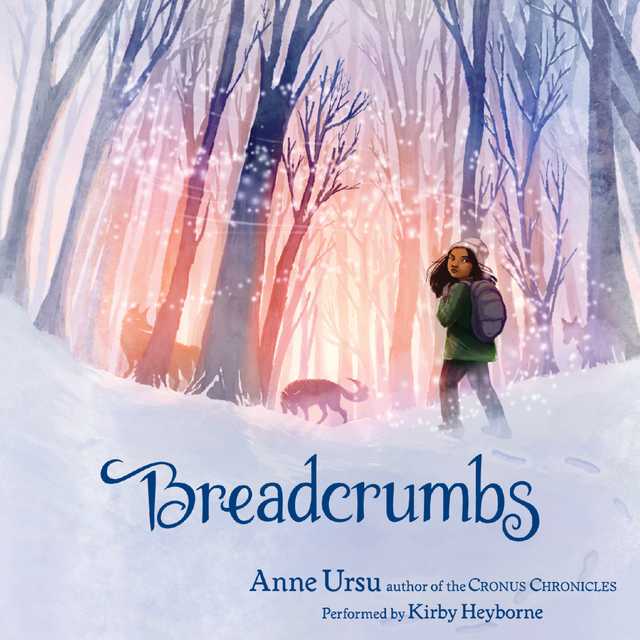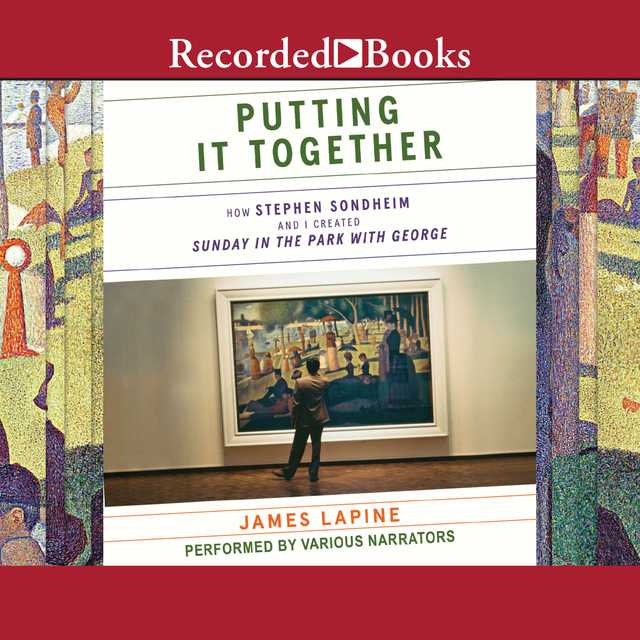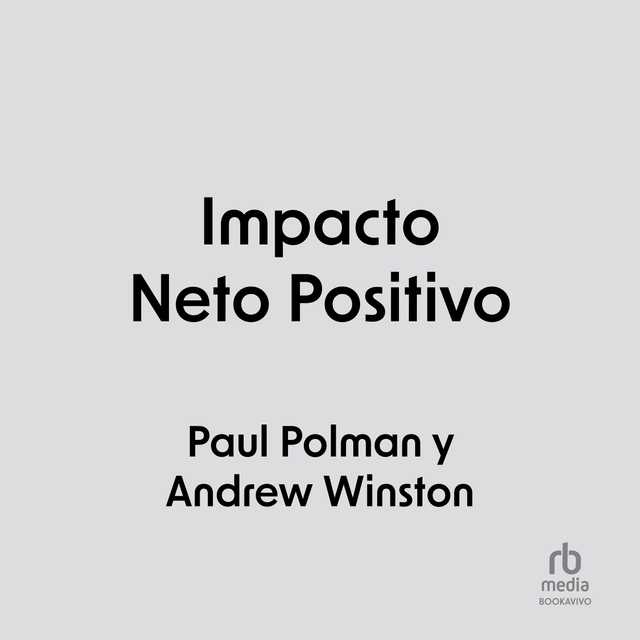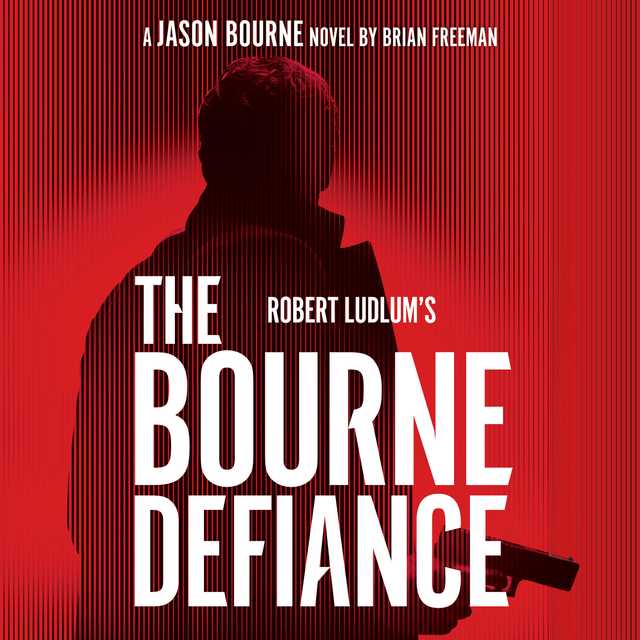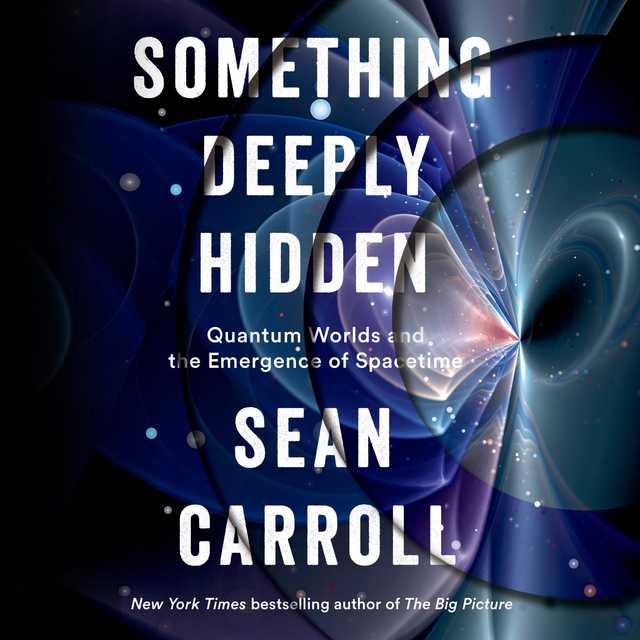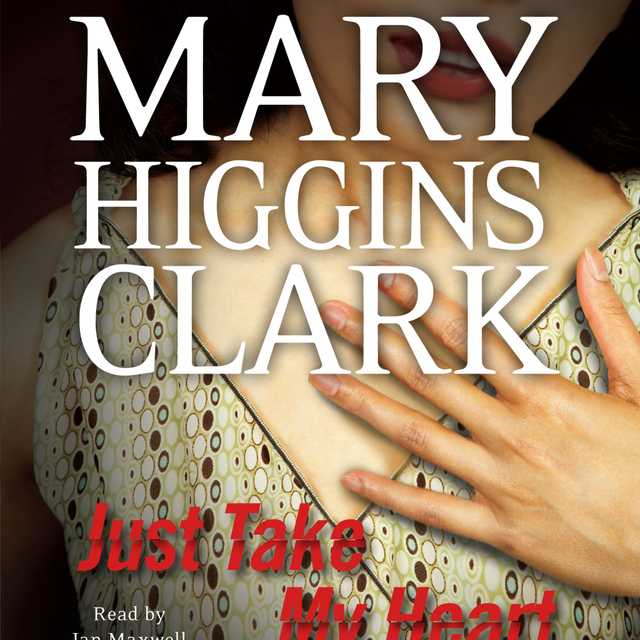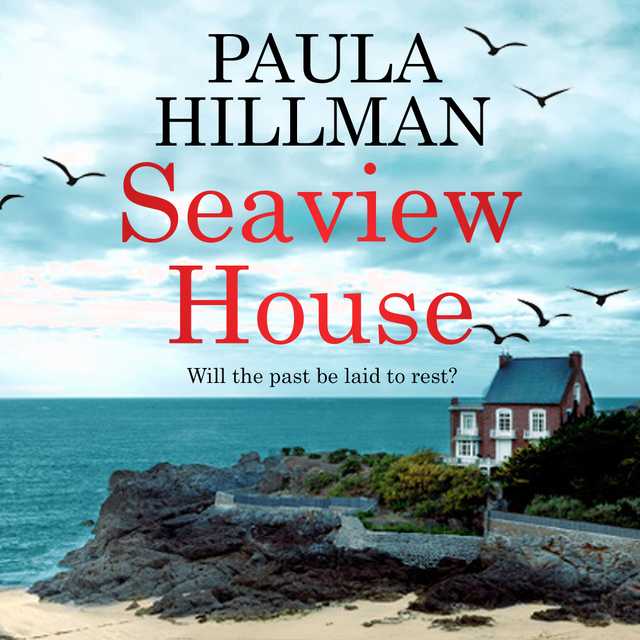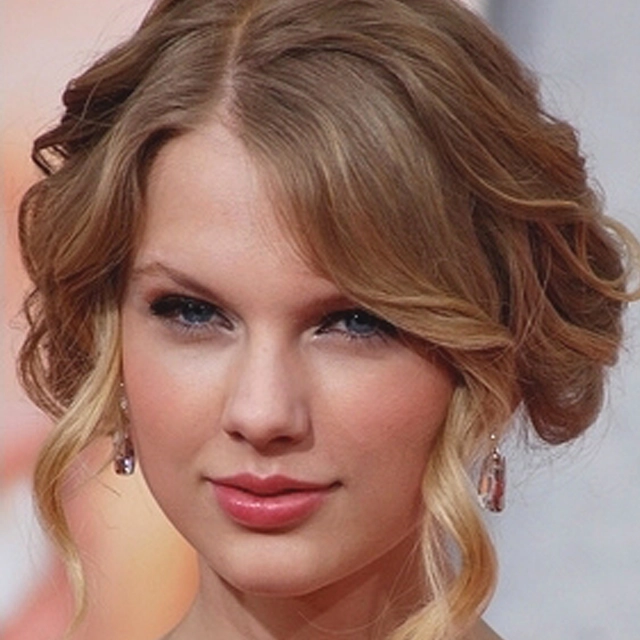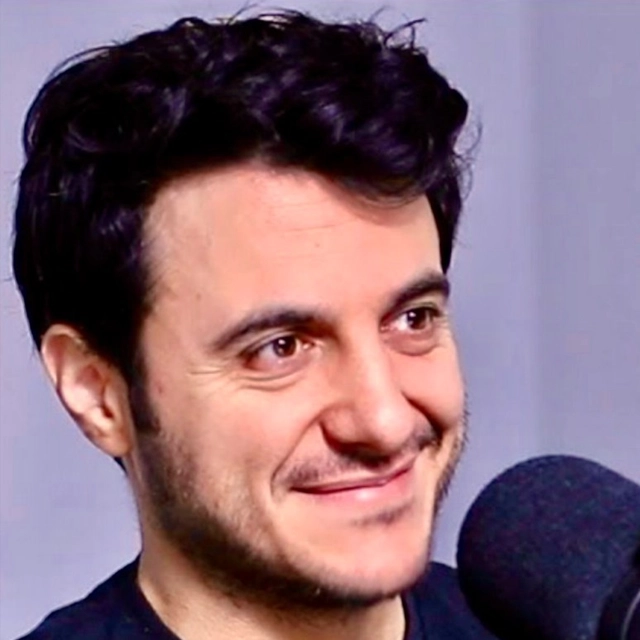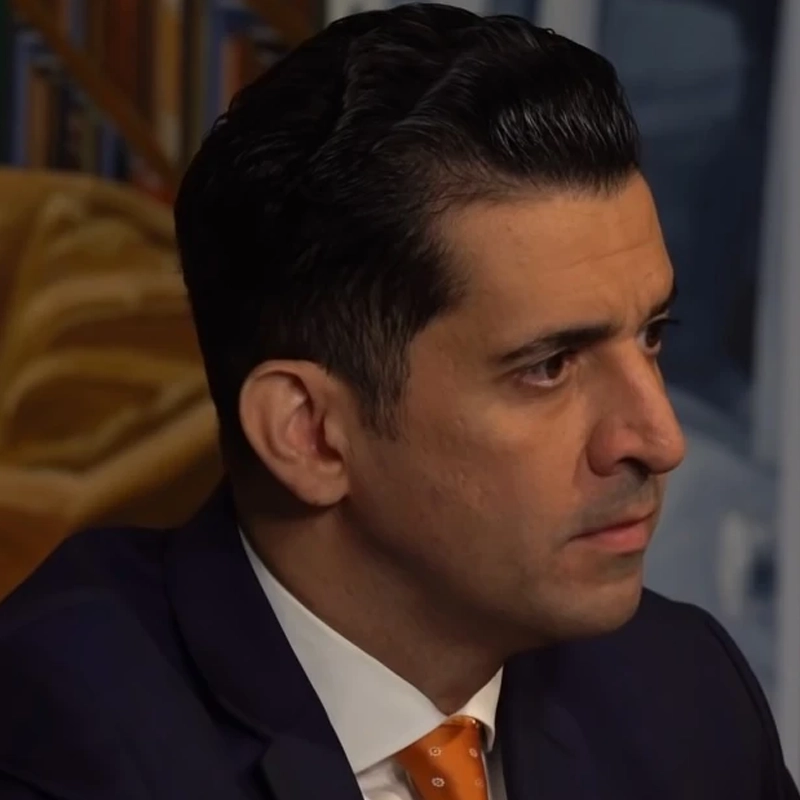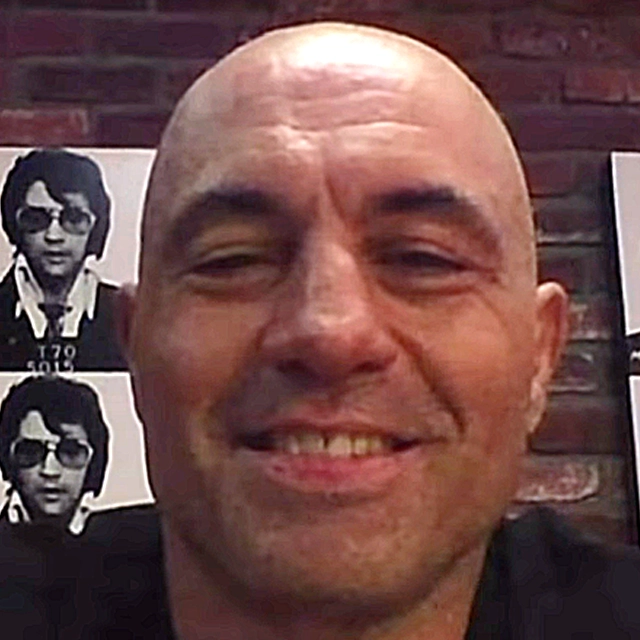Breadcrumbs Audiobook Summary
The winner of numerous awards and recipient of four starred reviews, Anne Ursu’s Breadcrumbs is a stunning and heartbreaking story of growing up, wrapped in a modern-day fairy tale.
Once upon a time, Hazel and Jack were best friends. But that was before he stopped talking to her and disappeared into a forest with a mysterious woman made of ice. Now it’s up to Hazel to go in after him. Inspired by Hans Christian Andersen’s “The Snow Queen,” Breadcrumbs is a stunningly original fairy tale of modern-day America, a dazzling ode to the power of fantasy, and a heartbreaking meditation on how growing up is as much a choice as it is something that happens to us.
In Breadcrumbs, Anne Ursu tells, in her one-of-a-kind voice, a story that brings together fifty years of children’s literature in a tale as modern as it is timeless. Hazel’s journey to come to terms with her evolving friendship with Jack will deeply resonate with young readers.
Supports the Common Core State Standards
Other Top Audiobooks
Breadcrumbs Audiobook Narrator
Kirby Heyborne is the narrator of Breadcrumbs audiobook that was written by Anne Ursu
Anne Ursu is the author of the acclaimed novels The Lost Girl, Breadcrumbs, and The Real Boy, which was longlisted for the National Book Award. The recipient of a McKnight Fellowship Award in Children’s Literature, Anne is also a member of the faculty at Hamline University’s MFA in Writing for Children and Young Adults. She lives in Minneapolis with her family and an ever-growing number of cats.
About the Author(s) of Breadcrumbs
Anne Ursu is the author of Breadcrumbs
More From the Same
Breadcrumbs Full Details
| Narrator | Kirby Heyborne |
| Length | 7 hours 47 minutes |
| Author | Anne Ursu |
| Category | |
| Publisher | Walden Pond Press |
| Release date | September 27, 2011 |
| ISBN | 9780062128737 |
Subjects
The publisher of the Breadcrumbs is Walden Pond Press. includes the following subjects: The BISAC Subject Code is Fantasy & Magic, Juvenile Fiction
Additional info
The publisher of the Breadcrumbs is Walden Pond Press. The imprint is Walden Pond Press. It is supplied by Walden Pond Press. The ISBN-13 is 9780062128737.
Global Availability
This book is only available in the United States.
Goodreads Reviews
Miranda
May 07, 2021
4.5 stars A boy got a splinter in his eye, and his heart turned cold. Only two people noticed. One was a witch, and she took him for her own. The other was his best friend. And she went after him in ill-considered shoes, brave and completely unprepared. Hazel and Jack are were the best of friends. They did everything together and when Hazel swapped schools, they were together all the time.But then...they have a fight. Not a squabble or an argument - an actual fight. And after that, Jack is different. Really different. Then he disappears.And no one knows - or even cares - except Hazel. But sometimes you have a friend to rescue. And so you take a deep breath and then step over the line and into the darkness ahead. It doesn't matter if they had a fight or if he thinks they're no longer friends. Hazel will rescue him. No matter what. Kids can handle a lot more than you think they can. It's when they get to be grown up that you have to start worrying. So. This one was actually pretty good.It did lean heavily (and I mean *heavily* on the Snow Queen at the beginning) and it was to the point where I nearly put it down. It was about 75ish pages in and not much of a rewrite or reimagination of that story...and honestly, I've read that one enough.But, I kept going and the story blossomed beautifully. It's such a shame that so much of it follows the Snow Queen or is wasted on character development because once Hazel wanders into the magical land - and when all the tropes turn completely on their head - I was fascinated. The book clawed its way from a 2-star book to 5-stars as soon as we sunk into the mystical world.The garden? The perfect parents with the wire bird cage? The woodcutter? The bloody dancing shoes? It was horrifying and creepy and absolutely riveting. Also, I loved how Hazel was adopted but the story wasn't ABOUT her adoption. It played a role, but it was not her defining character trait. And the same goes for Jack with his mother. She was depressed and played a role in Jack's world, but Jack wasn't solely defined by his mother's condition. This book was really good - just got to wait for the plot to get moving first.YouTube | Blog | Instagram | Twitter | Facebook | Snapchat @miranda_reads
Wendy Darling
March 15, 2013
If you gently shook a snow globe, you might find that the snowflakes come down on an enchanting story much like this one. Hazel’s best friend Jack has disappeared, and the quiet, scrappy fifth grader must overcome her fears—not to mention a mysterious witch and numerous other challenges—in order to save him. This lovely story, based on Hans Christian Andersen’s The Snow Queen, unfolds slowly and beautifully. As an adult who still reads or rereads a lot of children’s books and an avid lover of fairy tales, I was very much looking forward to reading this novel. Hazel turns out to be a brave, imaginative heroine whose love of books and quiet wonder at the world made me overjoyed to find such a kindred spirit. My heart also ached in sympathy for Hazel’s puzzlement and pain over the real life problems she faces, including her adoptive parents’ divorce, her sense of being an outsider as a child of Indian descent, and Jack’s sudden coldness to her before he goes away. The strongest and most compelling part of this book for me was how the author so seamlessly modernized this classic story. It is extremely difficult to retain the fairy tale elements of timelessness and mystery and magic while working in unforced contemporary references, but the author managed to do so with a great deal of ease and charm. Above all, the rift between Jack and Hazel, which is explained away by a cold shard of magical glass that got into his eye, works exceptionally well as a metaphor for growing up, much as it worked for the children of Narnia. The writing is just gorgeous, with wonderful descriptiveness and moments of true beauty. You can practically feel the sting of ice and the flurry of snow on your face as you read this story, and you can definitely feel Hazel’s wistfulness and longing to simply…belong. And to matter, to someone, somehow. I am a little puzzled by the audience for whom this book is intended, however. The jacket copy lists ages 8 – 12, but the narrative really sounds more like it’s a bedtime story for adults—or perhaps one that’s meant to be read aloud to children. It doesn’t really get into Hazel’s head so much as explain to you what she’s thinking or what it might mean, as there’s a little too much exposition for the reader to be unaware of the adult who is writing it. And while I was so thrilled with the literary references in the first half of the book, with subtle nods to everything from C.S. Lewis to Philip Pullman to J.K. Rowling, I have to confess that this eventually became a little distracting to me because there were so many of them. I appreciate that Hazel is a voracious reader, and the reader in me rejoiced to be reminded of so many beloved classics, but even with the knowledge that books are her windows to understanding the world, it all became a little too much. The writing is so strong, the images so evocative, and Hazel so thoroughly winning that I didn’t feel as though it was necessary to spend so much time focusing on other books. Some of the fairy tale elements that Hazel encounters later in the forest did interest me quite a bit, especially considering their dreamlike quality, but again, I think this would have been a perfectly strong book on its own--with its own mythology and its own unique feel—without relying so heavily on other people’s stories. The ending also feels very rushed and rather underdeveloped, in both story and emotional satisfaction. Overall I found that the first two-thirds of the book, as readers get to know Hazel and her quirks and her insecurities, is much more compelling than the last act, when things finally get moving with the big rescue. For while the idea of a child being so immersed in stories is certainly a bewitching one, at some point that child must step out of that fairyland in some way in order for this to be a true story of personal growth. Still, this is an exquisite book in many ways, and one well worth reading. (Certainly more so than the other recent YA nods to The Snow Queen story, Stork and Frost.) I wouldn’t be surprised to see this as an awards contender when all is said and done, and the book will no doubt deserve it on the strength of its writing and its premise alone. I do wish, however, that this fairy tale had trusted in its own merits—and those of its valiant little heroine—a little more. It could so easily have been something more than merely a charming and well-written homage.This review also appears in The Midnight Garden. An advance copy was provided by the publisher.
karen
April 17, 2020
growing up is so damn hard.when this book comes out, i guarantee it will win all the awards and land itself on all the school reading lists. this book couches some pretty devastating life lessons in an alternate realm of dangerous magical fantasy, but it does so without ever once being cutesy.hazel and jack have been neighbors and best friends forever. hazel was adopted from india as a baby by white american parents who have since separated, jack is the son of a woman who has retreated into this isolating fog of depression, and he has feelings of confusion and guilty resentment in response to the situation. to escape their lonely realities, hazel and jack create fantasy worlds around themselves where superheroes play baseball and robots fight knights, but at the end of the day, they have some unpleasant realities to go home to. and as time goes on, things change between them.financial circumstances have forced hazel to leave her fancy progressive school and attend the same public school as jack, who must judiciously divide his time between her and his male school friends. this is the age when boy-and-girl best friends start to be an unusual occurrence, peers start to ask annoying questions, and mothers start trying to un-wild their daughters and encourage them to make nice young lady friends.(view spoiler)[ although in hazel's case, the nice young lady friend actually sounds like someone you would want to hang out with and not just a pale substitute for how much fun she has with jack.they are doing more traditionally "girly" things like dancing and baking cookies, but with a manic edge to it, so it's not earnest and depressing. plus - awesome uncle. (hide spoiler)]and then an intervention of magic occurs, changing jack - driving a wedge between himself and hazel that she cannot see and so cannot understand the sudden change in jack. and this intervention naturally leads jack into the path of the snow queen, who leads him unresistingly away to her snow fortress.it could have been silly. it could have been trite, but it's not. ursu's writing is layered, making magpie references to literature both contemporary and classic, with good results. i am not usually a fan of pluck, but this imaginative, bookish, damaged, and -yes- plucky heroine really won my heart. her bewilderment comes alive, and brings back plenty of memories of feeling frustrated and feeling that everything was unfair and bigger than oneself.of course she goes after jack. of course she has many adventures along the way. in a way it is selflessness, but more precisely it is self-preservation, because she is at the age when your best friend is part of your self, and to lose jack, she is losing the center of her world.but, yeah, there's some baby-martyrdom here:(view spoiler)[this may not be a spoiler, but it's all the way on page 282, so i am being better safe than sorry. hazel is confronting the snow queen, and is told:"Know this," she said, her voice as clear as a shard of glass. "If you take him away, he will change. and someday he will be a man, and you will not even know him, and he will only think of you with a passing smile."At least he would think of me, Hazel wanted to say. (hide spoiler)]i love that.this is a lovely, bittersweet tale of growing up and growing apart, and the way our selves are fragmented as we go. i am so grateful i was part of this "passing of the ARC" chain, and it is with great ceremony that i mail it off to meredith. enjoy!!come to my blog!["br"]>["br"]>["br"]>["br"]>["br"]>["br"]>["br"]>["br"]>["br"]>["br"]>["br"]>["br"]>["br"]>["br"]>["br"]>["br"]>["br"]>["br"]>["br"]>["br"]>["br"]>["br"]>["br"]>["br"]>["br"]>["br"]>["br"]>["br"]>["br"]>["br"]>
Tatiana
August 10, 2011
I am not a regular reader of children's books and certainly not their connoisseur. Literature aimed at elementary school students is not something I actively seek or even enjoy at my age. But sometimes there are children's books that touch me in a special way. Breadcrumbs managed to bring out the memories of my childhood like no other book before. This modern day retelling of Hans Christian Andersen's The Snow Queen is an homage to all the wonderful stories of my childhood and some that captured my imagination in adult years - The Chronicles of Narnia, Harry Potter, When You Reach Me, The Wonderful Wizard of Oz and many, many more. Incidentally, The Snow Queen was a big part of my childhood too. I still remember very clearly Gerda's quest to save her best friend Kai after he was whisked away by the Snow Queen to the Queen's cold, cold ice castle.While Anne Ursu stays very close to Hans Christian Andersen's original story, preserving the tale's sense of loneliness and coldness, she adapts it perfectly to modern times. The children have modern troubles - Jack's mother is going through a deep depression, Hazel has to deal with her adoptive parents' divorce and to bring herself to fit in a new, difficult and different school. Ursu's best addition to the old fairly tale, IMO, is her interpretation of the enchanted forest (with the Snow's Queen's castle at the end of it) as a place of retreat for the souls who want to escape their troubled real lives. Such place can be very attractive from the outside, but it is gruesome when you are in it. Although Breadcrumbs is a lovely, atmospheric story, I don't think it surpasses its inspiration in quality. I think it could have been smoother. The second part of the novel, where Hazel embarks on her quest through the magic forest and encounters many curious people, animals and magic objects is a little muddy in its messages (or I might be too dense or too adult to understand them). However, the novel's best achievement is that it captures the internal world of a reading child perfectly. It is both a little lonely and full of wonder... I suspect those unfamiliar with children's books and who never were avid readers in their kid years will not enjoy Breadcrumbs quite as much as I did.
Misty
October 07, 2011
I don't even know how to go about this review without gushing like an incoherent loon. [Nope, as it turned out, all I had to do was sound really melodramatic and um...intense...Oh, boy.] I mean, really, I don't know that I have a single bad thing to say about this book. I loved reading it for the beauty of the storytelling and for the way it made me feel, and I respected it for the same reasons as well as one very important one: Anne Ursu respects her audience.It is very, very rare to find an author - or an adult, for that matter - who respects children and what they are capable of. So many adults who have dealings with children (parents, teachers, authors, etc) have a tendency to sugar-coat things and say that kids "aren't ready" for certain things; they pretend kids "won't understand". They have forgotten what it is to be a kid. I think, when we force ourselves, we can all remember what it was actually like to be a child and to be "treated like a child" - to have the adults around us speak of things as if we don't understand, or try to hide things from us that we already fully comprehend. As if a child isn't aware that they are growing up with divorced parents or an alcoholic mother, or an abusive father or anorexic sibling. We all joke about kids being mimics (don't they just say the darnedest things, I wonder where they come up with it), and we turn a blind eye to the fact that they are taking everything in and feeling and understanding and worrying about a lot more than we ever give them credit for.It's so very rare, then, to find an adult who realizes the strength and understanding children really do have, and embraces it and showcases it. [Side note: I have a little story about this, but I will save it for the end, since it really has no place in this review...] I find it so refreshing and so much more powerful when an author just writes, just tells the story that needs to be told, and trusts their audience to understand it. Anne Ursu does just this. Ursu does not pander to her audience or hide from less pleasant aspects. Her story is non-flinching and not necessarily going to have a happy ending. No magic wand is ever going to be waved. There are a lot of villains in the world, and they come in all sizes, but there is no Big Bad Villain, just time. Ursu tells a story that I think will be embraced by children - who will respect it without even realizing they are doing so, or why - and will be enjoyed by adults - who will find there is more in it that they would have imagined they'd get from a middle grade novel.There is a depth of pain to the story that I found really affecting; I didn't expect it to have such a range of experience and emotion. I don't want to turn anyone off by saying this, because it is not like it's some sob story written with the intent of making you cry. (I loathe anything that makes me feel like I'm intentionally being played.) It's just, there's an everyday pain worked into the story. There are broken homes and mental illness and that mix of longings that seem to come at a certain age - the longing to be "grown up" and figure things out coupled with the longing to have things remain easy and carefree and the same. The story is deceptive in its simplicity: a contemporary retelling of a fairly unknown fairy tale that is layered with understanding of human nature, issues of self-identity, crises of faith and a friendship so fierce its heartbreaking. It's full of these melancholic little word-gems. Which, yes, sounds a lot more emo than I'd intended it to, but that doesn't make it any less true.It was a very full reading experience. It was funny and modern and very, very true, and I adored Hazel. There is light to balance the dark, and a healthy dose of the magic and fantasy a story like this needs to thrive. We tend to think of coming of age stories as the transition into recognized adulthood, but I think this is very much a coming of age story for the almost-teen set. It's a time when friends do start to grow apart - and the very realistic pressure that Hazel (a girl) and Jack (a boy) face to begin growing apart, along with their desperation to go on as they were, felt very authentic to me. There's also this almost-but-not-quite metafiction aspect to it that I really liked. In some ways, on top of the very well done retelling, there is a focus on storytelling and the effects of stories in our lives. Avid readers, young and old, will see many familiar names and events from their own childhood faves and classics. It was well done - fun, like an easter egg hunt, rather than feeling unoriginal.I've talked in complete circles, I know it. But I feel like I can't say too much, and I can't say enough. I feel like there is something here for everyone. You can read it as a fairy tale retelling and leave it at that. You can enjoy it as a coming of age novel and feel a little wistful. You can find yourself in the wood, confronting your own yearning and sadness, or just glory in the beauty of a good story, well told. There is no real villain but time.*And now, an unrelated-but-related story from my childhood: When I was in 2nd grade, my teacher read a story called The Faithful Elephants aloud to us during story time. It's a heartbreaking kids picture book (a phrase you do not hear often) about the bombing of the Tokyo Zoo during WWII. We all cried, students, teacher and aides alike. It was one of our longest story times because it was so hard just to get through. Afterwards, we talked about the story and about compassion; about war and mankind and history.Years later, when I was taking a Children's Lit class, I emailed my 2nd grade teacher and said "I'm sure you don't remember me (she did), but I'm hoping you remember this" and I described what I remembered of the story. I asked her for the name of it because I wanted to present it to my class, and I thanked her for having the respect for children to be willing to read that book to us and let us connect to each other and show what we were capable of understanding and feeling. Not many teachers would be willing to read a story that would make an entire classroom of 7 year olds cry. It was a ballsy move, and I respected her for it.She told me that the timing of my email was perfect - the very next day she was going to an annual meeting where, among other things on the agenda, they would be deciding whether to allow her to continue reading that story to her classes. She took my email in; she retained permission. (She also bought me a copy and signed it to me, thanking me; it sits proudly on my shelves to this day. She died unexpectedly the next year, and I am so sad for all of the classes of children who are going to miss out on a teacher like her. I credit her with being one of the key people who inspired my passion for books.)This, I think, is the power of storytelling, and this is why I respect books like this, that treat children as people, so much.I hope you'll read this, and I hope you'll share it and all of your favorite stories, with a child in your life.
Betsy
June 27, 2011
Hans Christian Andersen’s fairy tale The Snow Queen is, let’s admit it, the world’s greatest puberty metaphor. A boy and girl are friends. Something happens and he grows cold and distant. In the midst of his indifference he’s spirited away and must be won back. Okay, the metaphor kind of breaks down at the end there, but the separation of boy/girl best friends is very real. With that in mind author Anne Ursu has done the mildly impossible. She has updated the old tale to the 21st century, thrown in references to other Andersen tales, and generally written one of the more fascinating and beautifully written, if sad, fantasy novels for middle grade readers of the year. If there's a book to watch this season, Breadcrumbs is it. Hazel and Jack are best friends, now and forever. At least that’s how Hazel sees it. Sure, she knows that Jack’s a little depressed because of his mother’s mental illness, but he’s always there for her no matter what. That’s a good thing since Hazel doesn’t like dealing with her new school and she definitely doesn’t want any other friends. Then, one day, everything changes. Jack suddenly turns cold on Hazel. He refuses to be her friend, and then without warning disappears altogether. His parents give one reason for where he has gone, but when Hazel learns that Jack was spirited away by a beautiful woman in a carriage she sets off into the nearby woods to find her friend and to save him, no matter what the cost (no matter if he wants to be rescued, for that matter). Trouble is, you can read all the books about adventures that you like, but when it comes to real rescue missions nobody can prepare you for the moment when you have to face your own problems.To my mind, Ursu does for Hans Christian Andersen in this book what Adam Gidwitz did for The Brothers Grimm in his A Tale Dark and Grimm. Which is to say, she picks him apart. Andersen was an odd author. There. I said it. His stories were rarely happy-go-lucky affairs. I mean, have you ever read The Swineherd? There’s a darkness to his tales. With Breadcrumbs that darkness isn't there simply because this is based on one of his stories. His influence permeates everything in this tale. Hazel’s travels bring her in contact with stories that bear some resemblance to The Red Shoes and The Little Match Girl. Other stories seem to reference The Wild Swans and The Nightingale, though a bit more obliquely. No doubt there are probably other Andersen tales squirreled away in the details of these chapters. You simply have to know where to look. It got me to thinking about what Andersen’s stories have in common. If Ursu is right, it may all come down to wanting things. In this book the character of The Snow Queen is described as having “unwanting eyes”. Everyone else in this story wants something though, and is willing to go to sometimes evil lengths to get what it is they desire. Maybe that was always the key to Andersen’s tales. Every one of his villains and heroes is felled by their wants. That Hazel is able to survive this story with her own want intact is a credit to the fact that she wants Jack back partly for herself, and partly for him as well. And in wanting what is best for him, the two survive. Notably, Ursu’s fantasyland doesn’t have a ruler. The Snow Queen lives there, but she isn’t the White Witch from Narnia. No one considers her in charge, only someone to be feared. With this in mind, what makes Ursu’s world so frightening is that the usual rules do not apply. For a girl like Hazel, fantasy worlds should work with a kind of internal logic. That logic is more than missing in this world of Ursu’s, and the result is a mirroring of the feeling kids have when they feel that anything could happen to them, and it could be bad. Reading this book you are not reassured that Hazel and Jack will get out of this world unscathed or even alive. Knowing the original story of The Snow Queen doesn’t help you out any either since Ursu plays enough with the story to avoid direct comparisons (there is no Little Robber Girl in this version, alas). When an author decides to create a fantasyland they have to determine whether or not it will be a fun fantasyland or a horrific one. Is this a place that children would want to disappear into? The child reader, in this particular case, is left feeling that this is not a fantasy world they would like to visit again. Which, of course, inevitably leads to the question of whether or not the child reader would reread this book. Expect fantasy and reality to mix in interesting ways here. Hazel uses fantasy to escape from the reality of her life, but while most authors would make this look like a good thing, here you can see that Hazel really is making her life harder than it needs to be. Jack’s mom, similarly, has withdrawn from the real world and exists in a universe of her own, much to her family’s chagrin. Under these circumstances it’s easy to see Jack’s abduction as metaphorical. The mirror shard in his heart and the ice he surrounds himself with, coupled with the people in the fantasy world who have retreated into horrific worlds to escape their real lives . . . man, there’s a lot to pick apart here! As an author, Ursu makes a number of choices with this book that are unexpected, but work. For example, I was a little shocked when the narrative suddenly leapt into Jack’s head partway through the text. It was unexpected, but it worked. In fact you need to be with Jack at least part of the time here or his abduction becomes rote rather than interesting (that’s my take). There’s also the fact that the quest element to this book comes roughly halfway through the story. For that reason I wouldn’t necessarily sell this one to kids as a quest or adventure novel. If they’re expecting magic sooner than 100 pages in, they are bound to be disappointed. Finally, there are the references to other works of children’s literature. Right from the start I made a note to myself that the plot of The Snow Queen (boy abandons his friendship with a girl unexpectedly) smacked of When You Reach Me. Ursu then references that very book later in the text. She also references Narnia, His Dark Materials, A Wrinkle in Time, and many others. By the end of the tale there are a couple loose ends that may confound readers. There are souls in trouble who are never rescued. There is question of what the wolves are and why they interact with Hazel in the way that they do. There is the clock in the woods. What is it? Why is it there? Ursu dares to ask questions and leave the answers up to the readers. It’s a bold choice and one that will frustrate a lot of kids who are used to having their questions answered for them by their authors. I can see English teachers having a field day with this book, using it for a variety of writing assignments. Prepare for objections, though. Objections happen when answers are not spelled out. Artist Erin McGuire lends her black and white illustrations to the novel, which is an interesting notion. Generally I’ve noticed that the art in a contemporary middle grade chapter book has a distinct purpose. If you’re dealing with a Roald Dahl title like The Witches, for example, then you need Quentin Blake’s pictures to take an edge off of the scariness. That’s akin to what McGuire’s pictures do here. They don’t take away all the sadness and scariness, but they do dampen it to a certain degree. Seeing Hazel helps us to deal with her misery for most of the book. What McGuire chooses to illustrate is also interesting. She doesn’t necessarily go for the obvious scenes, which is to say she doesn’t choose moments that contain a lot of action and adventure, but rather scenes of quiet magic. Kids, I think, will appreciate that. Her pictures serve the mood. This is not the first adapted version of The Snow Queen I’ve encountered. In the anthology Firebirds author Kara Dalkey wrote a tale called "The Lady of the Ice Garden," which sets the story in Late Heian, Japan. That story turned the Snow Queen’s abduction of Jack into something sexual, which is one way of taking it. Ursu’s way is yet another. Breadcrumbs can be an oddly dark, somewhat depressing story at times. Hazel, after all, leads a sad life and her adventures only reinforce that fact. Yet the writing is remarkable and there’s so much to think about and look into here that kids will find themselves relating easily. They may be upset by the ending (which I will not spoil), finding it a touch unfinished but some will understand that it’s a honest way to end the book. This is a book that gives readers whole worlds to discover and discuss. It reinforces the oddities of Hans Christian Andersen’s tales, and ties them into a 21st century world. A strange, amazing, sad, thoughtful, one-of-a-kind original. You will find no other book out there quite like this one, no matter how hard you try.For ages 9-12.
Amanda
May 20, 2011
This is a book for people who are in love with Story. I love that it's not about the mundane girl whose life is changed by a freewheeling, magical friend (though I do love those stories too!). It's about two magical, freewheeling friends and what happens when one of them loses his way. Hazel is such a lovable main character, so well captured. This book is fun and thoughtful and above all TRUE. It made me laugh and it brought me to tears and left me full of deep thoughts. I wish I had a time machine so I could go back and give this to myself when I was in fifth grade.
Kelly
September 21, 2011
Hazel and Jack have always been best friends, bonding over their shared love of science fiction and fantasy. They play make-believe “superhero baseball” and hang out in a derelict house they call the Shrieking Shack. But now that they’re eleven, Hazel’s mom is pushing her to make some female friends, and Jack is more interested in hanging out with his male friends than with Hazel. Then the impossible happens: Jack is taken away by a mysterious witch, and Hazel is the only one who can rescue him. Anne Ursu’s Breadcrumbs is a retelling of the fairy tale “The Snow Queen,” and it’s fantastic.Ursu perfectly captures what it’s like to be a child of about eleven, just on the cusp of puberty but not there yet. You’re old enough to know that believing in magic is considered childish, but you don’t want to live in a world without it. Social cliques are shifting, sometimes for no discernible reason, and you feel the loss of friendships without ever knowing what went wrong. And maybe your parents get divorced (Hazel’s), or maybe they’re suffering from a mental illness (Jack’s), or even if none of that happens, you’re starting to realize they don’t have all the answers. Or they don’t have the answers you want to hear, or they seem to be answering a subtly different question from the one you’re asking. Ursu uses a delicate touch with the familial issues; the book never feels like a Very Special Episode About Divorce or anything like that. Instead, the issues are woven seamlessly into the kids’ lives along with their fantasy geekdom.Later, when Hazel ventures into the realm of fairy tales, she learns that it contains many dangers that “would have been beautiful, as a story.” She encounters a variety of odd folk and situations, all drawn not just from fairy tales but from Hans Christian Andersen’s fairy tales in particular. (This was when I finally processed the fact that the heroine’s name is “Hazel Anderson”!) She’s offered several different kinds of oblivion; the challenge is to press onward even when peaceful forgetfulness would be easier, and to help people along the way if she can. Even if Hazel can find Jack, he may not want to be rescued; maybe he wanted the Snow Queen’s brand of oblivion. Always present, too, is the possibility that Hazel might save Jack from the immediate physical danger but still lose him emotionally. My favorite example of this theme has long been that penultimate transformation in Patricia McKillip’s Winter Rose, but now Breadcrumbs is going right up there with it.Erin McGuire’s illustrations are a treat, too. The ARC only has some of the drawings, but they are gorgeous and I can’t wait to see the rest. And I adore the cover: the woods, the wolves, and scrappy little Hazel looking just like she’s described in the text.This is a beautifully written book — and intelligently written, too. Ursu never talks down to her audience in terms of vocabulary or metaphor. Kids will enjoy this, especially kids who are introspective and bookish like Hazel herself, but I think it may actually be even more enjoyable for adults. This isn’t so much a book for children as it is a book about childhood, meaningful for readers of all ages. I’m in my thirties and I loved Breadcrumbs. It took me right back to when I was Hazel’s age and dealing with some of the same heartaches she was going through. I recommend Breadcrumbs to anyone who is a geeky kid… and anyone who has ever been a geeky kid.ETA: Since writing this review a few weeks ago, I've wondered if there's another significance of the kids being eleven--that's when you get your Hogwarts letter, or (since Harry Potter is fiction) that's when you don't get your Hogwarts letter. The current generation of kids has always had HP in their cultural landscape. I first started reading the books when I was 20, so I don't have them in the blood in the same way, even though I loved most of them. I joke that my Hogwarts letter went astray--but how many of today's kids hoped for one in all seriousness?
Samuel
December 22, 2011
This book is more than a little otherworldly. It's as hypnotic as a blizzard, as ominous as a dream, as fragmented as reality.The plot is an extended reinterpretation of Hans Christian Andersen's "The Snow Queen," set partly in modern-day Minnesota, and partly in The Woods, one of the most unfriendly landscapes in children's fantasy. Fifth-grader Hazel Anderson's best friend Jack is missing, and she takes it upon herself to find and rescue him, even in the face of mounting evidence that he may not want to be rescued after all.The prose is masterfully poetic, evocatively descriptive, and desperately sad. Indeed, though I've read children's books in which sadder things happened, I'm not sure I've ever read one in which the tone was so consistently haunting, melancholic, and existentially troubled. Even the book's ending, with its conclusion of the heroic quest, refuses to bask in happiness or allow Hazel a moment of pure joy. The book's received mixed reviews, which I think is related to the fact that it resists so many conventions of popular literature in general and children's fantasy in particular. Even the most frightening of the characters hardly qualifies as a villain, and there's no Aslan or Gandalf to help guide Hazel on her quest either. Secondary characters flit through the book half-visibly, especially in the second part; we see the portions of their stories that intersect with Hazel's, but no more. Even though various people, including Hazel at times, want the plot to be organized as a classic good vs. evil conflict, it steadfastly refuses to go that way. We don't expect that from our fantasy novels, especially for children. But isn't it more like the way life actually operates? Existence is painted in shades of gray. There are few true villains, and fewer heroes. People come and go from our lives, often with little explanation and with seemingly important questions unresolved. Even narrative itself is an illusion, a cloak we weave from broken threads to try and keep the cold of chaos away. What, under those circumstances, is more real: an epic battle of Good and Evil, or the attempts of a flawed but determined girl to save a fracturing friendship, with results that, even at the end of the story, aren't fully visible? As the Jens Lekman song goes, "What's broken can always be fixed; what's fixed will always be broken."I think many people would like this book more if it were less true. But I love it for its truthfulness, its gorgeous weariness, and its (successful) attempts to find beauty and truth in things that are not only broken, but both being fixed and breaking more all the time.
Abby
September 19, 2020
Once upon a time, there was a boy named Jack who got lost in the woods. His best friend went after him. Along the way, she had many adventures. She met woodsmen, witches, and wolves. She found her friend in the thrall of a queen who lived in a palace of ice and had a heart to match. She rescued him with the help of a magical object. And they returned home, together, and they lived on, somehow, ever after. It went something like that, anyway. book playlist: https://open.spotify.com/user/mylittl...Okay, if you wanted to know my aesthetic in book form, this book is it. It's a retelling of one fairytale with bits and baubles from others thrown in, it's got friendship as the main plot point, the main character's relationship with her mother is fantastic. It deals with things like "plastic flower" words and changes in gravity at lunch tables and presents with promises. We follow Hazel, whose father has just left, and Jack, whose mother has empty eyes. They're best friends and nothing could change that. Nothing but a shard from a broken mirror. Jack goes into the woods, and Hazel is the only one who will venture after him. The woods, where woodsmen are bad and wolves are good, where couples keep gardens because flowers can't fly away, where a starving girl stares into match flames, and a white witch waits at the end. Is this now one of my favorite books?Yes. Absolutely.Is it for everyone? No, probably not. It's very stylized writing, which I adore, but not everyone will. It is a middle-grade, and probably would be considered juvenile by others. But for me, and for others like me, this book was everything I wanted it to be and more. 5 stars from me and if I could give it more, I would. I adored this book so, so much.re-read 2020: yep. still one of my faves.
Laurel
May 22, 2011
Whew. Okay. Wow.BEAUTIFULLY written. Really, perfect prose. No way I can give this less than 5 stars.I'm really interested in books that do what this books does-- take "regular" kids into magic, at the very age when they'e questioning the idea/existence of magic. Books that bridge the MG/YA leap from "outside" worlds of adventure to "inside" worlds of emotion/identity. Divorce and mental illness are handled deftly, as is adoption. No hammering-over-the-head. While the fairytale retains an ethereal quality that shows how the author respects and loves the tradition.I can make a little list of tiny questions/issues with the book, but really they'd be preferences of mine, not flaws with the book itself. I think Ursu has a shot at award season.
Kim
February 16, 2012
Remember back when you were 10 and the most important thing was a) being a world renowned hula hooper and b) marrying Davy Jones? If so… email me, we must be twins separated by fate. Remember when you would rush off with your friends after school, without proper outdoor attire, no helmet as you straddle your ten speed, no cell phone with a GPS chip so your parents always know where you are… the only caution being from Officer Friendly to not talk to strangers and avoid starting forest fires? Or something like that? Remember when being a kid meant that there were bullies that made fun of you but no one killed themselves or shot up their schools or staged a sit in about it. You just cornered them in the playground and swung your Holly Hobby tin lunchbox as hard as you could into their smug little faces? Remember when the phrase ‘I have to take my meds’ didn’t mean anything to you?I do. Hazel probably doesn’t and that’s sad. It’s sad that kids can’t be kids anymore. Yes, a tired thought… I remember when we were princesses and our friends’ older brothers were evil wizards and we had to fight them off with fairy dust (sand) and how they would always end up claiming a super power and running away. We didn’t think much of video games, maybe a game of pong after dinner… But, that would be hours and hours away and we wouldn’t show up at home until way after dark and our parents weren’t organizing search parties and finding the locations of sex offenders in our neighborhood. Hazel does try to maintain those golden moments. She has a best friend, Jack, who lives next door and he draws castles and invents arch enemies and they play super hero baseball and hand out in abandoned shacks. Hazel feels like she belongs when she’s with Jack. Belongs…. To what? To where? I guess to anyone/thing/place. Being ten and having to deal with what multiple choice questions and math problems and all that can be being 10. Especially when you are dreaming about traveling to the earth’s molten core and then the arctic and then through space and beyond. Hazel and Jack are alike. Hazel’s dad left. Jack’s mom is depressed and is only able to maintain being a shell of what she was. And then the story gets real. With a journey through the woods. For Jack, it’s to forget about all that’s bad. For Hazel, it’s to get her best friend back. There are witches who wear swanskins, woodsmen who leave ballet shoes for lost girls, fates who like shiny things, a birdkeeper and his bird sister, a man and woman who turn little girls into flowers so that they will not leave them. Then there is the Ice Queen. Who offers Jack a ‘palace of ice and a heart to match.’ ”Sometimes, it seems like it would be easier to give yourself to the ice.” Hazel will not give up. “You’re Jack,” she said, putting the mirror in front of him. “Jack Campbell. Do you see?” And you are made of baseball and superheroes and castles and lots of Hazels-past, even if you lost them to the wind, it doesn’t matter.”Hazel is my hero. I would not fit in with her in a superfast minute.
Most Popular Audiobooks
Frequently asked questions
Listening to audiobooks not only easy, it is also very convenient. You can listen to audiobooks on almost every device. From your laptop to your smart phone or even a smart speaker like Apple HomePod or even Alexa. Here’s how you can get started listening to audiobooks.
- 1. Download your favorite audiobook app such as Speechify.
- 2. Sign up for an account.
- 3. Browse the library for the best audiobooks and select the first one for free
- 4. Download the audiobook file to your device
- 5. Open the Speechify audiobook app and select the audiobook you want to listen to.
- 6. Adjust the playback speed and other settings to your preference.
- 7. Press play and enjoy!
While you can listen to the bestsellers on almost any device, and preferences may vary, generally smart phones are offer the most convenience factor. You could be working out, grocery shopping, or even watching your dog in the dog park on a Saturday morning.
However, most audiobook apps work across multiple devices so you can pick up that riveting new Stephen King book you started at the dog park, back on your laptop when you get back home.
Speechify is one of the best apps for audiobooks. The pricing structure is the most competitive in the market and the app is easy to use. It features the best sellers and award winning authors. Listen to your favorite books or discover new ones and listen to real voice actors read to you. Getting started is easy, the first book is free.
Research showcasing the brain health benefits of reading on a regular basis is wide-ranging and undeniable. However, research comparing the benefits of reading vs listening is much more sparse. According to professor of psychology and author Dr. Kristen Willeumier, though, there is good reason to believe that the reading experience provided by audiobooks offers many of the same brain benefits as reading a physical book.
Audiobooks are recordings of books that are read aloud by a professional voice actor. The recordings are typically available for purchase and download in digital formats such as MP3, WMA, or AAC. They can also be streamed from online services like Speechify, Audible, AppleBooks, or Spotify.
You simply download the app onto your smart phone, create your account, and in Speechify, you can choose your first book, from our vast library of best-sellers and classics, to read for free.
Audiobooks, like real books can add up over time. Here’s where you can listen to audiobooks for free. Speechify let’s you read your first best seller for free. Apart from that, we have a vast selection of free audiobooks that you can enjoy. Get the same rich experience no matter if the book was free or not.
It depends. Yes, there are free audiobooks and paid audiobooks. Speechify offers a blend of both!
It varies. The easiest way depends on a few things. The app and service you use, which device, and platform. Speechify is the easiest way to listen to audiobooks. Downloading the app is quick. It is not a large app and does not eat up space on your iPhone or Android device.
Listening to audiobooks on your smart phone, with Speechify, is the easiest way to listen to audiobooks.

